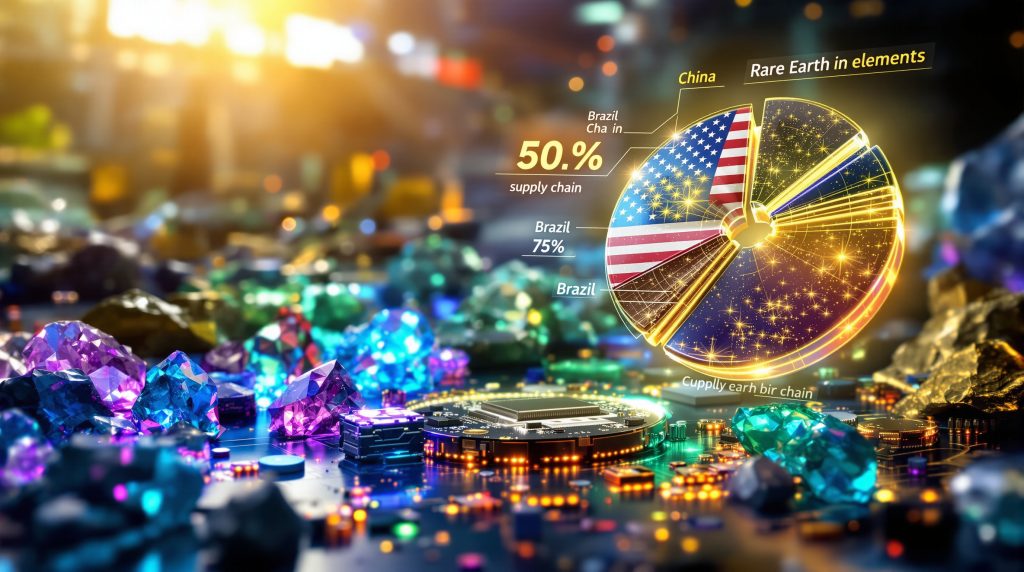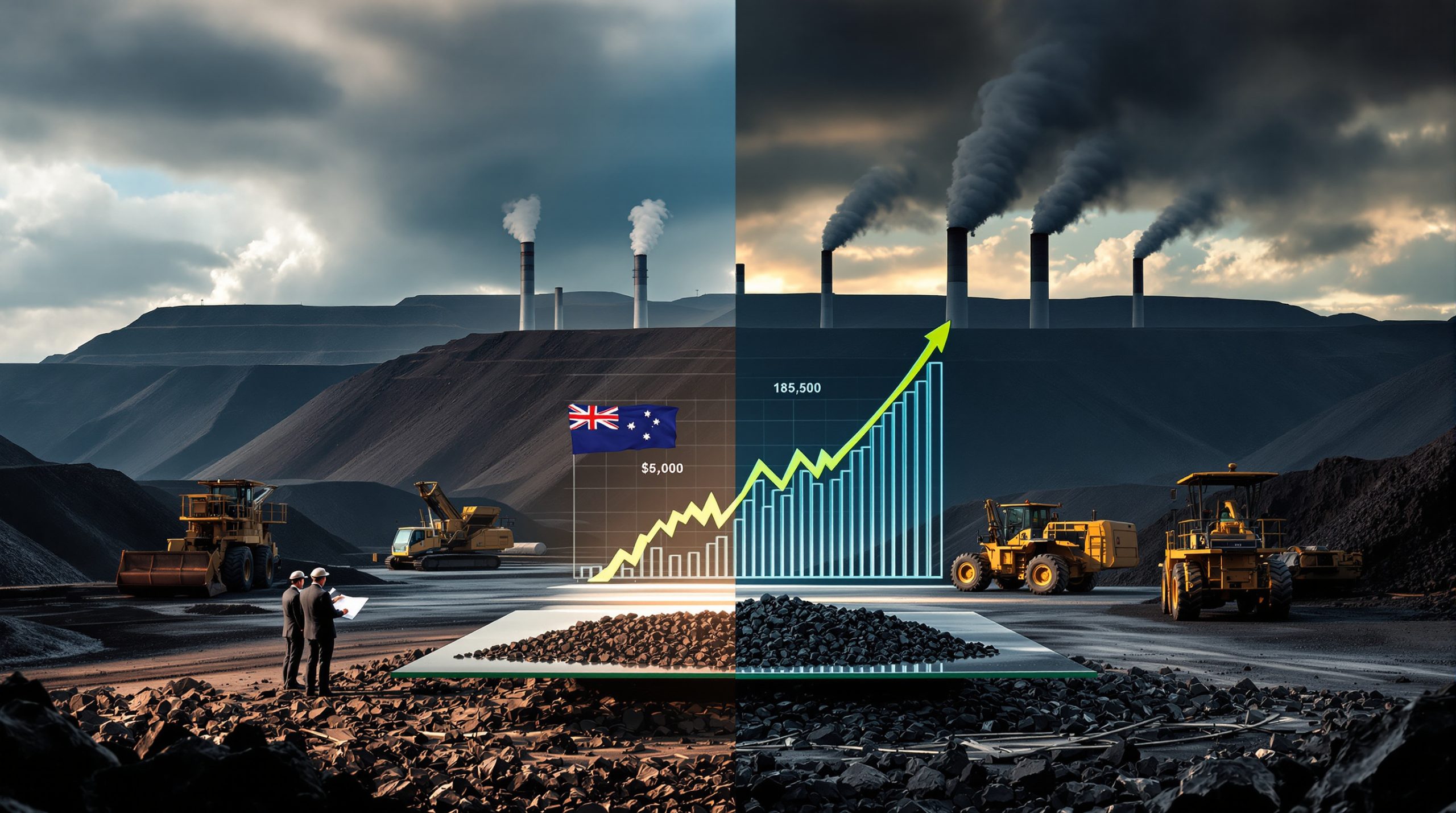How is the US Government Supporting Rare Earth Development in Brazil?
The United States government is strategically investing in rare earth element (REE) projects in Brazil through the US International Development Finance Corporation (DFC). This funding represents a significant step in diversifying global rare earth reserves distribution beyond China's dominance and establishing secure sources for these critical minerals essential to modern technology and defense applications.
DFC's Initial $5 Million Commitment to Aclara Resources
The DFC has committed up to $5 million in development funding for Aclara Resources' Carina heavy rare earths project in Brazil. This initial investment primarily supports the ongoing feasibility study, which began in July 2025 and is expected to conclude by the end of Q1 2026.
This funding arrangement includes a potential conversion mechanism, allowing the DFC to convert its investment into equity if Aclara completes either:
- A single financing event exceeding $50 million, or
- Multiple financing events totaling at least $75 million within a 12-month period
Additionally, the DFC maintains a preferential option to provide or arrange further project financing once the feasibility study is complete.
According to Aclara CEO Ramón Barúa, this initial investment validates their strategy and represents an important first step toward a larger commitment from the DFC once the feasibility study is completed. Having such a strong partner helps de-risk the development of their Brazil project while providing additional confidence to potential offtakers currently evaluating Aclara as a long-term supplier of heavy rare earths.
Why Are Heavy Rare Earths Strategically Important to the US?
Critical Applications in Defense and Green Technology
Heavy rare earth elements (HREEs) are essential components in numerous high-tech applications crucial to both national security and the energy transition strategy:
- Defense Systems: Precision-guided missiles, radar systems, and communication equipment
- Renewable Energy: Permanent magnets for wind turbines and electric vehicle motors
- Advanced Electronics: Smartphones, computers, and medical imaging devices
These elements possess unique magnetic, luminescent, and electrochemical properties that make them irreplaceable in many advanced technologies. Their strategic importance has grown significantly as defense systems become more sophisticated and the global push for clean energy accelerates.
Supply Chain Vulnerability
The current global rare earth supply chain presents significant vulnerabilities:
| Supply Chain Stage | China's Market Share | US & Allies Share |
|---|---|---|
| Mining | 60% | 40% |
| Processing | 87% | 13% |
| Magnet Production | 92% | 8% |
This concentration creates substantial supply risks for Western economies and defense systems, driving the urgent need for supply diversification. The economic and national security implications of this dependency have become increasingly apparent, especially as geopolitical tensions rise.
What Makes Brazil's Rare Earth Resources Strategically Valuable?
Geological Advantages
Brazil possesses significant geological advantages for rare earth development:
- Diverse Deposit Types: Including both light and heavy rare earth elements
- High Concentration of HREEs: Particularly valuable elements like dysprosium and terbium
- Favorable Mineralization: Often in clay deposits that can be processed using more environmentally friendly methods
Brazil's geological formations offer some of the most promising heavy rare earth deposits outside of China, with grades and accessibility that make commercial development viable.
Geopolitical Stability
As a longstanding US ally in South America, Brazil offers:
- Political stability compared to many mining jurisdictions
- Established mining regulations and infrastructure
- Geographic proximity to US processing facilities
- Alignment with US strategic interests
This political reliability represents a key advantage over many other potential rare earth sources, which may be located in regions with greater political instability or adversarial relationships with the United States.
How Does Aclara's Approach to Rare Earth Production Differ?
Circular Mineral Harvesting Process
Aclara's Carina project employs innovative "Circular Mineral Harvesting" technology that offers significant environmental advantages:
- Recycles more than 95% of water used in processing
- Recovers and reuses 99% of chemical reagents
- Eliminates traditional tailings dams
- Enables complete revegetation of mined areas
This approach represents a significant departure from conventional rare earth mining and processing, which has historically been associated with substantial environmental impacts. Through innovative mine reclamation techniques, Aclara's process addresses many of the environmental concerns that have complicated rare earth development in Western nations.
Vertically Integrated "Mine-to-Magnet" Strategy
Aclara is pursuing a comprehensive supply chain approach with three key components:
- Mining Operations: Developing the Carina project in Brazil and Penco project in Chile
- Processing Capabilities: Establishing a US-based separation facility with technology validation through Virginia Tech
- Downstream Integration: Forming strategic partnerships for rare earth metals, alloys, and magnet production
This vertical integration strategy aims to create a complete supply chain alternative to the Chinese-dominated system, from mining through to finished magnet production. By controlling multiple stages of production, Aclara can potentially offer greater supply security and traceability.
What Progress Has Been Made on the Carina Project?
Current Development Status
The Carina heavy rare earths project has reached several important milestones:
- Feasibility study initiated in July 2025
- Mixed rare earth carbonate pilot plant operational in Brazil
- Conceptual engineering completed for US separation facility
- Technology validation underway through university partnerships
The project is advancing on schedule, with the feasibility study expected to be completed by the end of Q1 2026. This progress represents significant momentum for a project that could become a cornerstone of Western heavy rare earth supply.
Strategic Partnerships
Aclara has established key partnerships to strengthen its position:
- 50:50 Joint Venture with CAP: Chilean steelmaker partnership focused on rare earth metals and alloys production
- Strategic Alliance with Vacuumschmelze: Collaboration with leading magnet manufacturer to integrate materials into permanent magnet production
- Virginia Tech Collaboration: Operating a pilot plant for technology validation, process optimization, and workforce training
These partnerships strengthen Aclara's technical capabilities and market positioning, providing pathways to transform raw materials into high-value products and access to established distribution channels.
How Does This Investment Fit Into Broader US Rare Earth Strategy?
Multi-Agency Approach to Supply Chain Security
The DFC funding represents one component of a comprehensive US government strategy involving multiple agencies:
- Department of Defense: Supporting domestic processing and manufacturing capabilities
- Department of Energy: Funding research and development for processing technologies
- US Geological Survey: Conducting resource assessments and technical assistance
This coordinated approach recognizes that building a resilient rare earth supply chain requires addressing multiple challenges simultaneously, from resource identification to processing technology development to manufacturing capacity.
Complementary Domestic Investments
The Brazilian project funding complements significant investments in domestic US capabilities:
- Processing Facilities: Development of separation and processing plants on US soil
- Research & Development: Advanced extraction and processing technologies
- Workforce Development: Training programs for specialized technical roles
The strategy acknowledges that while domestic production is important, a truly resilient supply chain will require partnerships with allied nations that possess significant resource endowments, like Brazil. Furthermore, recent advances in rare earth breakthrough technologies have enhanced the viability of previously marginal deposits.
What Are the Expected Economic and Strategic Outcomes?
Supply Chain Resilience Benefits
The investment is expected to yield multiple strategic benefits:
- Diversification of heavy rare earth supply beyond China
- Establishment of processing capabilities in allied nations
- Creation of redundant supply chains for critical defense applications
- Reduction of vulnerability to supply disruptions or trade restrictions
These outcomes directly address vulnerabilities that have been identified in numerous government and industry assessments of the rare earth supply chain.
Timeline for Impact
| Phase | Expected Timeline | Key Milestones |
|---|---|---|
| Feasibility Study | Q1 2026 | Completion of technical and economic assessment |
| Development Decision | Mid-2026 | Final investment decision |
| Construction | 2026-2028 | Building of mining and processing facilities |
| Production | 2028 onward | Commercial production of heavy rare earth products |
While the timeline extends several years into the future, the potential strategic value of establishing an alternative heavy rare earth supply chain justifies the patient investment approach.
What Challenges Remain for Rare Earth Development?
Technical and Economic Hurdles
Despite progress, significant challenges remain:
- Processing Complexity: Separating individual rare earth elements requires sophisticated technology
- Capital Requirements: High upfront costs for mining and processing facilities
- Market Uncertainty: Price volatility affects investment decisions
- Environmental Considerations: Ensuring sustainable extraction and processing practices
These challenges have historically complicated efforts to develop rare earth projects outside China, leading to project delays and cancellations even when resource quality is high.
Competition with Established Supply Chains
New rare earth projects must compete with established Chinese operations that benefit from:
- Economies of scale
- Integrated supply chains
- Government subsidies
- Lower environmental compliance costs
This competition creates significant pressure on project economics and requires innovative approaches to cost management and value creation.
How Might This Investment Influence Global Rare Earth Markets?
Potential Market Impacts
The development of alternative supply sources could lead to:
- Greater price stability for rare earth elements
- Reduced premiums for non-Chinese materials
- Development of more transparent pricing mechanisms
- Establishment of strategic reserves in Western nations
Over time, the emergence of reliable alternative suppliers could fundamentally reshape market dynamics that have been dominated by Chinese producers for decades.
Implications for International Relations
The investment signals:
- Strengthening US-Brazil economic cooperation
- Prioritization of critical mineral security
- Reduced leverage for supply chain dominance
- New patterns of resource diplomacy
As countries increasingly view critical minerals through a strategic lens, investments like the DFC funding for Aclara's Brazil project take on significance beyond their immediate economic impact.
Strategic Significance of US-Brazil Rare Earth Cooperation
The DFC's investment in Aclara's Brazilian rare earth project represents more than just financial support for a mining venture—it signals a strategic pivot toward securing critical mineral supply chains through international partnerships with trusted allies. By supporting innovative, environmentally responsible extraction methods and vertical integration from mine to magnet, the US is working to address vulnerabilities in a supply chain critical to both economic competitiveness and national security.
As this project progresses toward production, expected by 2028, it will serve as an important test case for whether Western nations can successfully establish alternative rare earth supply chains that can compete economically while meeting higher environmental and social standards. The success of this initiative could have far-reaching implications for global resource politics, technological innovation, and the clean energy transition.
The collaboration between the US and Brazil on rare earth development exemplifies a new approach to resource security that emphasizes partnerships with allies rather than purely domestic solutions. This model may prove instructive for addressing vulnerabilities in other critical mineral supply chains as well, including Australia's critical reserves.
Want to Stay Ahead of the Next Major Mineral Discovery?
Discovery Alert's proprietary Discovery IQ model instantly alerts investors to significant ASX mineral discoveries, providing actionable intelligence for both short-term traders and long-term investors. Explore how major mineral discoveries can generate substantial returns by visiting Discovery Alert's dedicated discoveries page.




